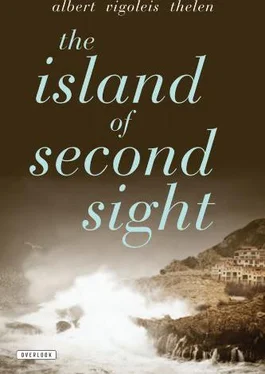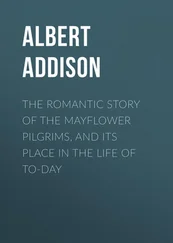Beatrice inclines to arrogance. Quite often she is moved to issue unfair, over-hasty opinions. I calmed her down a bit by pointing out that in the most famous galleries of Europe, works of no less putrid quality get exhibited all the time. I was thinking primarily of the Mauritshuis in The Hague, and today I can think of several others that I hadn’t yet visited back then, when I relied for the most part on Zwingli for my justification of kitsch. If human hair could display an aesthetic reaction, it would often stand on end in art galleries, such as the ones I’m thinking of. But human hair is uneducated; you might say it is crass, or even lacking in respect, for otherwise it wouldn’t keep on growing after the demise of its maternal soil.
We must further consider (I am still quoting myself, as I stood in contemplation of the gimcrack art produced by Don Alonso’s father-in-law) that world-class collections display their moldy junk mainly for historical purposes, whereas here in the Count’s palace, it was shown as a gesture of piety toward the person of its perpetrator, who was still among the living and who resided under this very roof. This state of affairs actually doesn’t affect the meaning of the term “inherited,” which I have used above. As count and grandee of a historical nation, and as an artist within his own four walls, Don Juan, the father-in-law, had long since ceased to exist. His kingdom was no longer of his own world, and he could be regarded as already interred, if he didn’t sit day by day on a stool in the kitchen, peeling potatoes and cleaning vegetables with one blind eye. He himself considered this second, proletarian existence of domestic servitude as an anomaly of his family destiny, all the more so since he could no longer paint, and thus had forfeited his life’s golden glory. In a purely physical sense, he was a large man, a veritable colossus with thick, white, close-cut hair. His bushy eyebrows, two bundles of fur with a few bristles sticking out, would have seemed menacing if the eyes beneath them had been similarly piercing. But the left side showed total sightlessness, and all the right one saw was a troublesome blur. It was only after work hours, when the old gentleman rose from his drudgery and took the place of honor in the hall, that he perked up markedly, thus putting certain limits on my prior description of him. The seat of honor was a wicker armchair with wobbly legs; the fact that it was situated next to his self-portrait was a coincidence that gave rise to interesting comparisons. But because in a Spanish household, not to mention in a Spanish boarding house, a day’s work ends at around midnight, and because Don Juan had to climb out of the sheets every morning early, he never sat for very long next to this previous edition of himself. Certainly he might have had better reason to veer off toward anarchism than his active, vital, joyful, life-affirming, yet often life-cursing son-in-law, if it weren’t for the fact that he, Don Juan, had already entered his second childhood.
I would be doing this artist an injustice if I failed to mention that the remaining rooms were likewise papered with his entertaining colored canvases. The dining room, in particular, contained masterpieces of his appetite-enhancing brushwork. I had the pleasure during our entire stay at the Pensión del Conde, of sitting opposite a fish with an expertly painted, staring, glazed eye that seemed to plead with me, “Please, won’t somebody finally eat me up, now that I’ve been gasping here on dry land ever since my executioner fished me out of his cranial aquarium?” It wasn’t lack of air that was causing this fish to gasp, but an ordinary kitchen onion that it held in its maw. To keep the fish within the confines of its frame, the painter had garnished its ventral fin with a sprig of parsley.
If we can speak of a certain lack of genuine art on the part of this family’s testator, it was made up for by his heir’s practical, applied artistic talents. Don Alonso was skilled in all kinds of crafts. He punched leather, painted on porcelain, burned in wood, made ceramic pots, turned wood on a lathe, etched, carved ivory, and modeled in wax. He was good at marquetry and intaglio, and bound his own books with self-marbled end-papers. In short, there was nothing you could find in a handbook of arts and crafts that this after-hours anarchist didn’t practice with proficiency. His workshop on the third floor was equipped with all the necessary tools and machines. I was constantly amazed and, I must admit, envious whenever I watched this master puttering away in his white smock, which displayed, in a kind of batik pattern, traces of all his various enterprises.
Since I was myself an unregistered member of the guild that can make thirteen botched jobs out of a dozen tries, we soon became friends. I was allowed to enter and leave his studio at will, and also to use his tools, once Alonso noticed that I was just as clever at this sort of thing as he was, and that I wasn’t about to purloin his precious possessions. This anarchist Count would never have tolerated such a thing.
Only one area was off limits to me, and that was the tiny, windowless cubicle where he devoted himself wholeheartedly to his anarchism. It could be reached only by squirming through garrets, past a pigeon loft, up a set of stairs, and along perilous attic passageways. In the palace it was referred to as the cámara ardiente , which in Catholic churches is what they call a chapel with a catafalque for funeral masses. Not unlike the Church, though with much less pious intent, the Count placed his cámara in the service of death. This is where the partisans gathered in the evening, men who were convinced that things must not go on as they were, and that something had to be done. Some had read Bakunin, others were versed in Ballanche; all of them were devoted to what they read between the lines in Unamuno and Pío Baroja, and they all dabbled in the manufacture of fireworks and infernal machines with which to undermine bourgeois society and, above all, blow up the churches. The conspirator-in-chief, Don Alonso, demanded that one of these churches be spared: Montesión, where once every year he partook of the Holy Eucharist.
Don Darío, who up to now is familiar to us in word if not in deed, was a member of years-long standing in this league of explosives experts. With some he had a reputation as the group’s intellectual spine and unimpeachable brain, for he was a well-read fellow, much traveled, nursing a personal hatred of the Pope, and in possession of the financial wherewithal without which it is futile to foment any conspiracy. But he got thrown out of the nocturnal cooperative as too dangerous a revolutionary. In a later chapter I shall return to this gentleman. But let me explain here why a rich and smart terrorist like him could no longer be tolerated in the Count’s powder magazine.
One night the gang, having convened in the fraternal harmony and pacific concord that is essential when dealing with high explosives, was as usual fiddling around with their petards. Don Darío, our crippled hero of the barricades, having maneuvered the secret passageways, suddenly bounced into this chamber of horrors. Upon arrival, he proclaimed loudly that enough was enough; from now on all churches must be leveled, including the Montesión that Comrade Alonso wanted preserved for the salvation of his private soul. Down with all Your Eminences, one of whom, an eminently grey one, had been living it up for months in Don Darío’s hotel with wine and women, but had now vamoosed for the mainland without paying his bill! Don Alonso, it was reported, was at first benumbed by this pronouncement. But then he quickly recovered, and retorted that if Comrade Darío blasted away his church, he would personally light the fuse in the chapel at this co-conspirator’s bullfight arena, and send the Holy Mother of God sky-high, so help him God! With a gnashing of teeth Don Darío retracted his threats, only to put forth additional warnings that were worse, because he meant to carry them out right here in the powder room. There was no choice but to gang up on this zealot and transport him out to the street. When we took up residence in the Pensión del Conde, relations among the bomb builders had broken off.
Читать дальше












